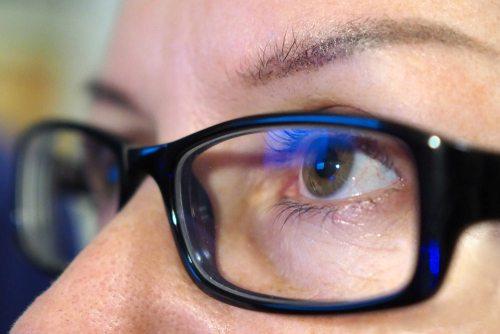As the foremost authority in vision care, Jackson Davenport Vision Center, located in Summerville, South Carolina, often has patients complain of headaches, brow arches, sore eyes, and blurred vision. These are symptoms of computer eye strain. Many of us have jobs that require us to stare at computer screens for hours at a time, which can put a real strain on our eyes. This article will discuss Computer Vision Syndrome, its treatment, and computer applications that can help reduce its effects.
Understanding Computer Vision Syndrome (CVS)
Computer Vision Syndrome (CVS), also known as Digital Eye Strain, refers to a group of eye and vision-related problems caused by prolonged computer, tablet, e-reader, or smartphone use. Unlike reading a printed page, digital screens often present visual challenges such as less defined characters, reduced contrast, and disruptive glare or reflections. Additionally, the angles and distances used for screen viewing differ from traditional reading, placing extra strain on the eyes.
Even minor, uncorrected vision issues can significantly impact your comfort and performance when using digital devices. Standard eyeglass prescriptions may not be suitable for computer viewing distances. This mismatch can make users tilt their heads awkwardly or lean toward the screen, resulting in neck, shoulder, or back discomfort.
Ultimately, CVS symptoms occur when the visual demands of screen use exceed your eyes’ ability to meet them comfortably. Those at most significant risk spend two or more hours daily using digital screens. A simple habit, like following the 20-20-20 rule—every 20 minutes, look at something 20 feet away for 20 seconds—can help prevent symptoms.
How Is Computer Vision Syndrome Treated?
Making small changes to your vision care, workspace, and screen habits can significantly reduce symptoms of CVS:
1. Eyewear Adjustments
People who don’t usually wear glasses may benefit from prescription eyewear tailored specifically for computer use. Existing glasses might not provide optimal clarity at screen distance, which can strain your eyes. Special computer glasses with the right lens power, tints, or coatings can improve comfort and performance.
In some cases, vision therapy may be necessary. This structured program of visual exercises helps enhance eye coordination, focusing, and the connection between your eyes and brain.
2. Reduce Screen Glare
Glare from surrounding lights or windows can worsen eye strain. Adjust your lighting, close blinds, or reposition your monitor to minimize reflections. Consider a glare filter for your screen and ask for adjustable lighting in your workspace.
3. Optimize Monitor Position
Place your screen 20 to 28 inches from your face, with the top of the monitor slightly below eye level. This reduces the need for unnatural head or neck positions. Use a document holder at eye level to avoid constant up-and-down movements between paper and screen.
4. Take Frequent Eye Breaks
Adopt the 20-20-20 rule to give your eyes regular rest. Also, blink often to maintain eye moisture. If your eyes still feel dry, consider using lubricating eye drops to relieve discomfort.
5. Adjust Screen Settings
Tweak your screen’s brightness, contrast, and font size to reduce strain. Don’t settle for factory settings—adjust them to your comfort.
6. Use Blue Light Filter Apps
Apps can help limit blue light exposure, contributing to eye fatigue and affecting sleep quality.
7. Limit Screen Time
Screen time should be monitored, especially for children. Kids may not recognize when their eyes are tired, so encourage regular breaks.
8. Use Artificial Tears
Even if your eyes feel fine, using over-the-counter artificial tears can help maintain hydration and prevent symptoms from returning.
Helpful Apps to Reduce Eye Strain
Several apps are designed to minimize blue light exposure and ease digital eye strain:
-
f.lux: Automatically adjusts your screen’s color temperature based on your location and time of day, creating a warmer screen tone in the evening to reduce blue light.
-
SunsetScreen: Similar to f.lux, but allows you to customize sunrise and sunset settings. It’s especially useful during winter when daylight is limited.
-
Iris: A powerful tool with customizable options for brightness, color temperature, and more. It offers paid versions (Iris Mini Pro: $5, Iris Pro: $10) and supports desktop and mobile platforms.
-
Twilight: For Android, Twilight adjusts your screen’s blue light levels according to time, alarm settings, or custom schedules. It also provides educational insights into how screen use affects your sleep and health.
Schedule an Eye Exam in Summerville, SC
While CVS doesn’t cause permanent damage, its symptoms can be disruptive. If you’re experiencing headaches, eye strain, blurred vision, or dry eyes during or after screen use, contact the optometrists at Jackson Davenport Vision Center in Summerville, SC. Schedule your comprehensive eye exam today and take the first step toward clearer, more comfortable vision.
Let me know if you’d like a version formatted for a blog, a PDF handout, or website content!

